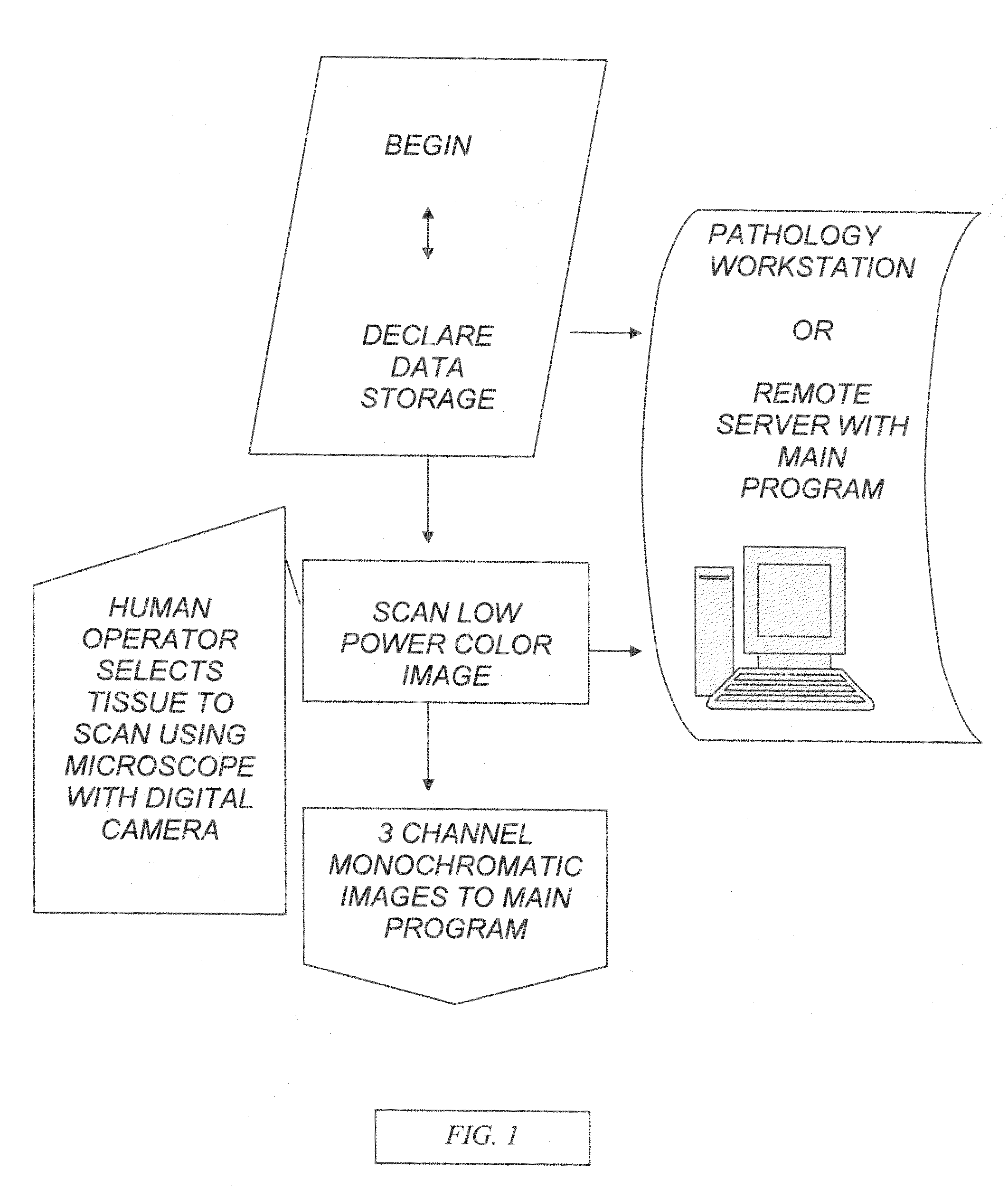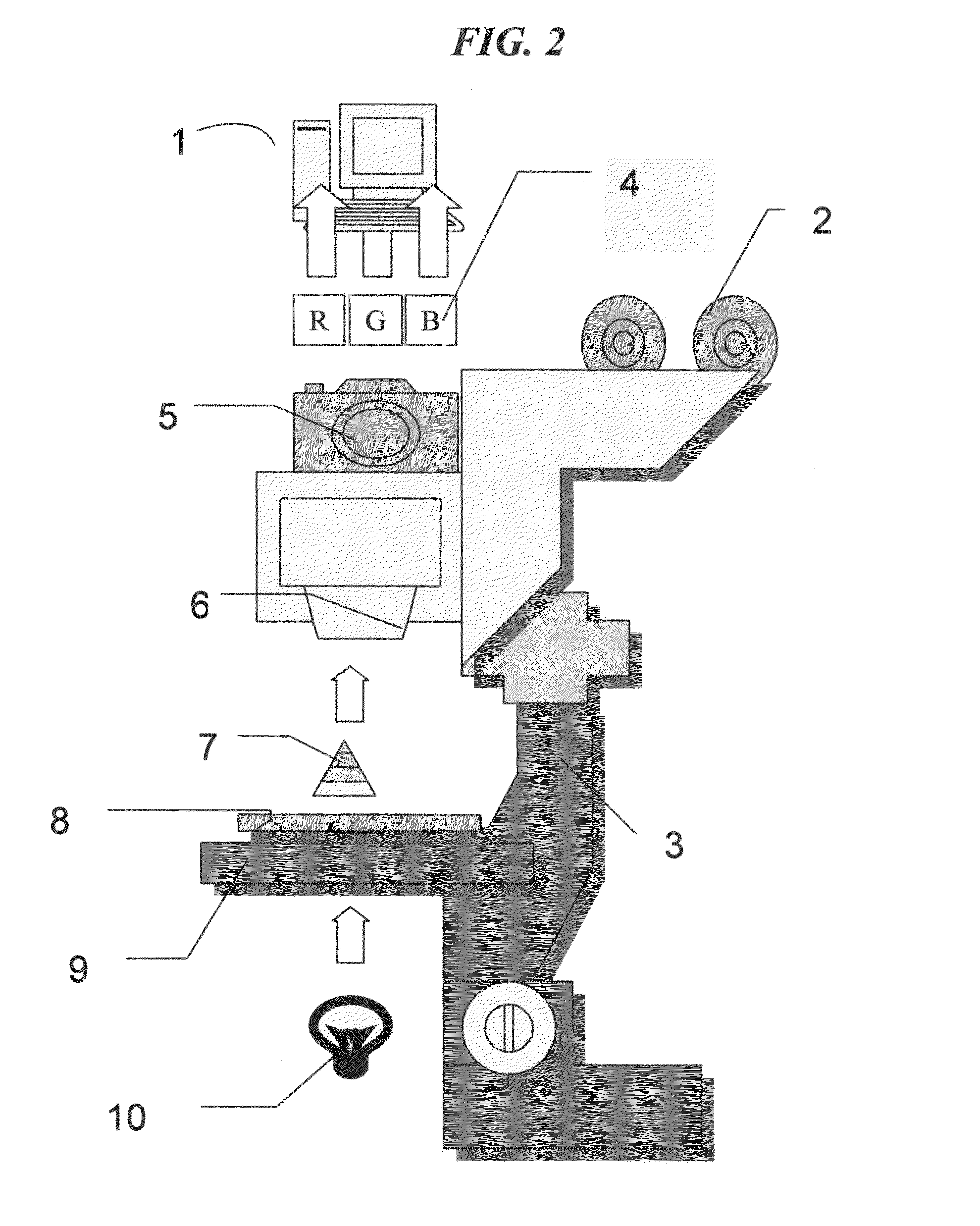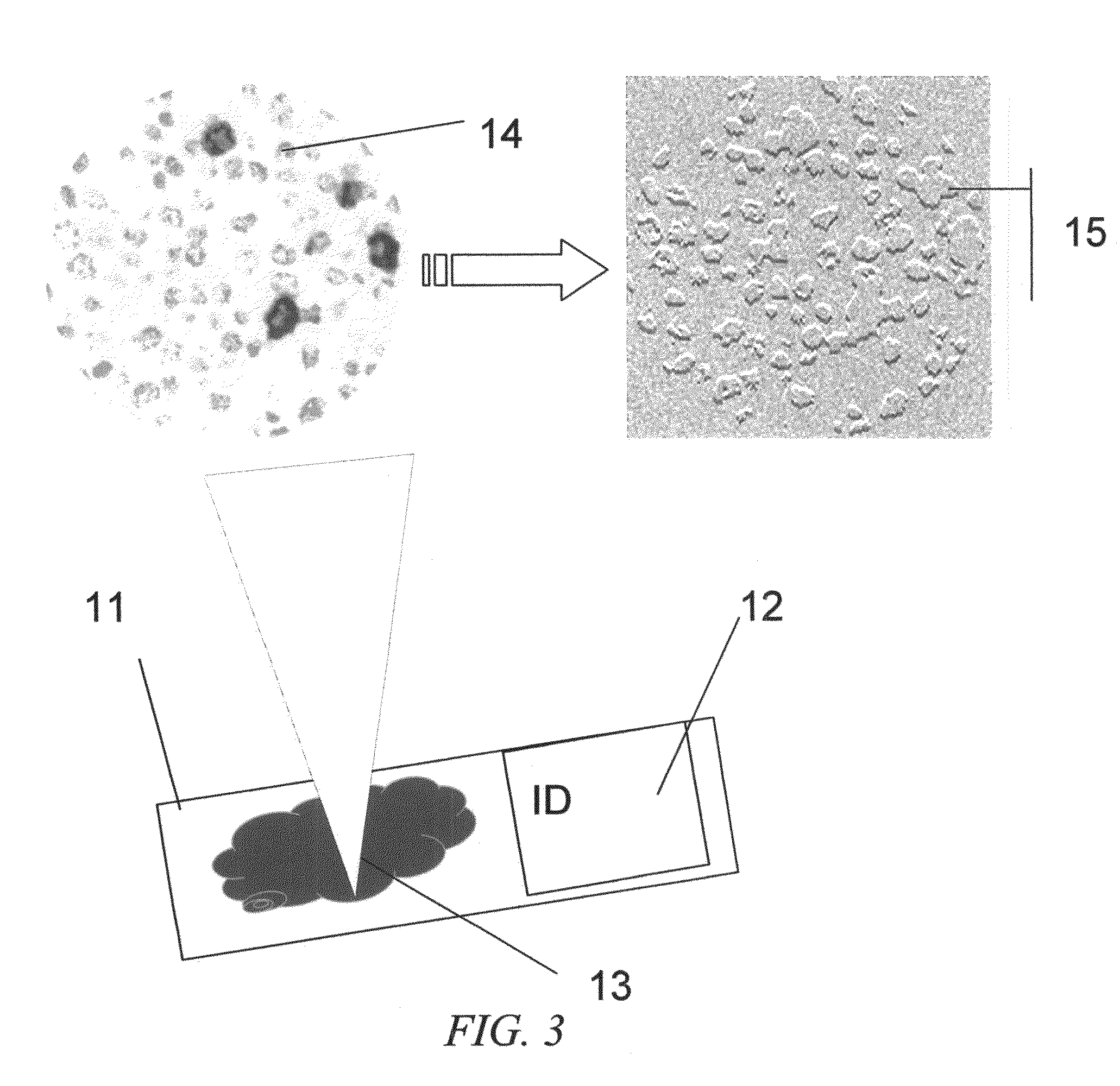Virtual flow cytometry on immunostained tissue-tissue cytometer
a flow cytometer and immunostained tissue technology, applied in the field of automated light microscopic image analysis, can solve the problems of limited population statistic analysis, system cannot perform chromogen-based brightfield cell analysis, and cannot be useful
- Summary
- Abstract
- Description
- Claims
- Application Information
AI Technical Summary
Benefits of technology
Problems solved by technology
Method used
Image
Examples
Embodiment Construction
[0089]FIG. 1 is a block diagram of the interface of the system. The system includes a human operator or an automated slide delivery system, to place and select the tissue to scan for low power color image. The image is scanned of 3 channel RGB monochromatic planes which are sent to the main program. The main program and its data storage are in preferably a pathology workstation with monitor display or alternatively located in a remote server.
[0090]The general purpose computer 1, preferably a personal computer (PC) FIG. 2 controls the operation of the image processor board preferably a Pentium with PCI bus advanced chip, running Windows 9× or greater or a PowerPC with PCI bus running OS 8.5 or greater and able to run executable programs. The frame memory of the image processor is memory mapped to the PC which performs most of the complicated computations that the image processor cannot handle. This includes searching and other operations requiring random access of the frame memory. W...
PUM
 Login to View More
Login to View More Abstract
Description
Claims
Application Information
 Login to View More
Login to View More - R&D
- Intellectual Property
- Life Sciences
- Materials
- Tech Scout
- Unparalleled Data Quality
- Higher Quality Content
- 60% Fewer Hallucinations
Browse by: Latest US Patents, China's latest patents, Technical Efficacy Thesaurus, Application Domain, Technology Topic, Popular Technical Reports.
© 2025 PatSnap. All rights reserved.Legal|Privacy policy|Modern Slavery Act Transparency Statement|Sitemap|About US| Contact US: help@patsnap.com



